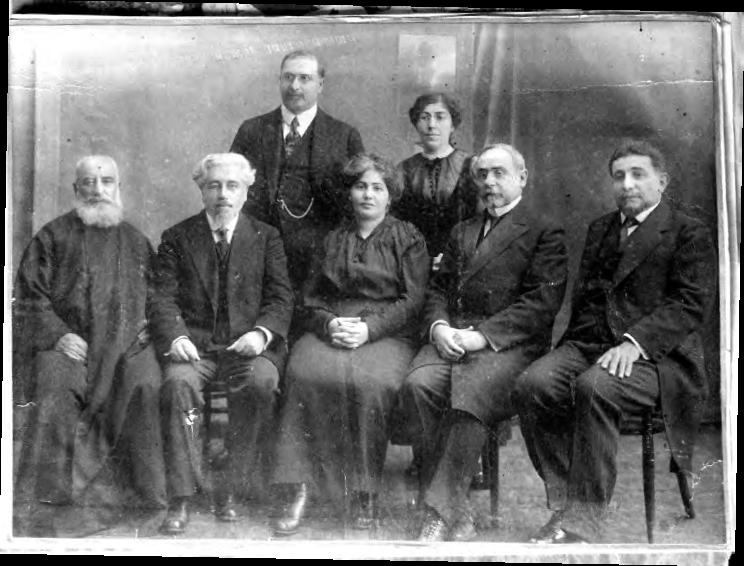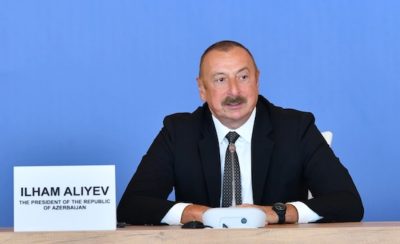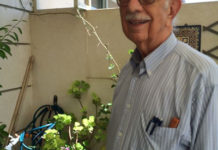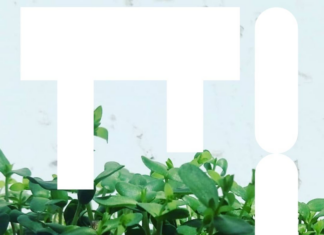By Aram Arkun
Mirror-Spectator Staff

NEW YORK — Zabel Yesayan, a prominent writer, activist and feminist, observed and survived many of the calamities of the Ottoman Armenians before falling victim to the Stalinist regime in Armenia. She created a number of important literary works as well as nonfiction works of witnessing, but she fell into obscurity after her death, outside of small literary circles and some Diasporan Armenian-language schools. A 40-minute documentary made by Talin Suciyan and Lara Aharonian in Armenia from 2007 to 2008, called “Finding Zabel Yesayan,” seeks to remedy this situation.
The film was shown at the end of March and early this April at the Armenian General Benevolent Union (AGBU) Alex and Marie Manoogian School of Southfield, Mich., sponsored by the school, the A r m e n i a n Research Center of the University of Michigan at Dearborn and the Cultural Society of Armenians from Istanbul; National Association for Armenian Studies and Research (NAASR), with the cosponsorship of the Armenian International Women’s Association; St. Leon Armenian Church; New York University (NYU) with the sponsorship of NYU Armenian Hokee; the University of Pennsylvania, through the university’s Armenian Student Association and the AGBU Young Professionals of Philadelphia; Duke University’s Franklin Humanities Institute; and at the Krikor and Clara Zohrab Center of the Diocese of the Armenian Church of America. This US tour was made possible by the initiative of Dr. Ara Sanjian, head of the above-mentioned Armenian Research Center. Suciyan spoke about the film at each of these events, and her trip provided an opportunity to find out more about her work.
The idea for the film arose when Talin Suciyan, originally from Istanbul and a writer between January 2007 and October 2010 for the Armenian-Turkish weekly Agos, went to Yerevan in 2007 to participate in a three-month women’s creative writing workshop run by Nancy Agabian of New York. The workshop was organized by the Women’s Resource Center in Yerevan, led by Aharonian and the artists’ collective and non-governmental organization Utopiana. Aharonian, originally from Beirut, immigrated to Canada during the Lebanese Civil War, but for the last nine years has been living in Yerevan, where she founded together with Shushan Avagyan and Gohar Shahnazaryan, the Women’s Resource Center. Aharonian has studied psychology and comparative literature, while Suciyan in 2008 began her doctoral studies at Munich’s Ludwig Maximilian University’s Institute of Near and Middle Eastern Studies. She works at the Institute now as a teaching fellow, and is conducting her doctoral research on the Istanbul- Armenian press after World War II.
At the Yerevan workshop, Suciyan and Aharonian read excerpts from Averagnerun mech [Among the Ruins], Yesayan’s work about the 1909 Cilician massacres. Suciyan explained that they realized that as Western Armenians, “we knew certain parts of Zabel’s life, and our friends in the group, Armenians from Armenia, knew another part of Zabel’s life. Furthermore, we realized that according to ordinary public opinion, Zabel had no place in Armenia. Although she shared the same destiny as Charents or Bakunts [Eastern Armenian writers], she never became known in Armenia. This was a little weird for us…” Yesayan wrote in Western Armenian for most of her life, and this may have posed an obstacle for some Eastern Armenians to get familiar with her work. However, she wrote in Eastern Armenian after 1933.
The two women were moved to read more of Yesayan’s works and when they were informed by Artsvi Bakhchinyan that Zabel Yesayan had descendants living in Yerevan, they immediately went to see them. They met her grandson, Alexander Yesayan, and other family members and family friend Clara Terziyan. They read the memoirs of her daughter, Sofi Yesayan, and listened to sound recordings of Zabel’s son, Hrant Yesayan. The two researchers discovered that Zabel Yesayan’s personal belongings, manuscripts and photographs — and even some of her hair — were held at the Charents Museum of Literature and Arts, run by Artsvi’s father, Dr. Henrik Bakhchinyan, and found archival materials at Armenia’s National Archives pertaining to her lawsuit. All this material shed new light on the Soviet Armenian period of Yesayan’s life, and the pair decided that it was worthwhile to prepare a documentary.








